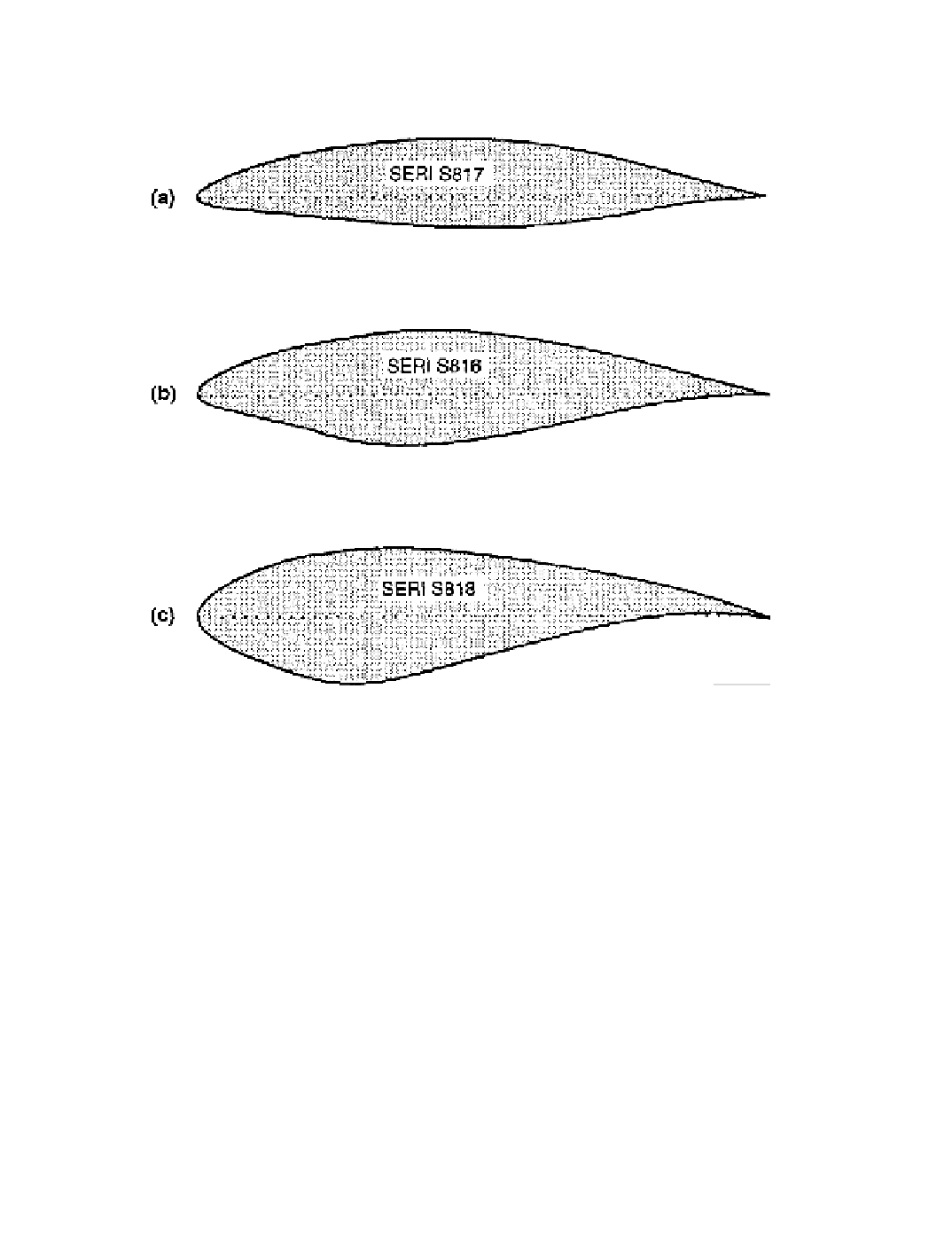Environmental Engineering Reference
In-Depth Information
Figure 6-9. Contours of the SERI series of airfoils designed specifically for fixed-pitch
HAWTs 36 m in diameter and larger.
(a) Tip region (
r/R
» 0.95) (b) Primary outboard
airfoil (
r/R
» 0.75) (c) Root region (
r/R
» 0.40) [Tangler and Somers 1995]
Field Performance Testing of Wind Turbine Airfoils
While idealized, two-dimensional wind tunnel tests are necessary for developing airfoil
contours and obtaining lift and drag data with which to predict rotor power output, final
evaluation of a wind turbine airfoil must be made on the basis of full-scale field
performance tests. Only in the field can the combined effects of spatial and temporal
turbulence, variability in steady wind speed, airfoil rotation, hub/tip losses, surface
roughness, and manufacturing tolerances be measured. Of course, the variability of the
wind complicates the testing, and airfoil-to-airfoil comparisons are more difficult to make.
Standardized procedures have therefore been developed for the purpose of increasing the
reliability and reducing the uncertainty in field tests of wind turbine performance,
emphasizing
power
curves
[AWEA 1988] and
energy output
[ASME 1988].

Search WWH ::

Custom Search